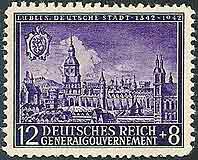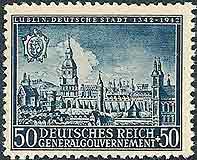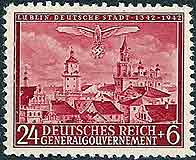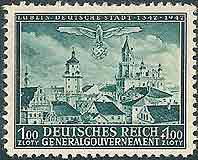The
Church of St. Barbara,
Krakow
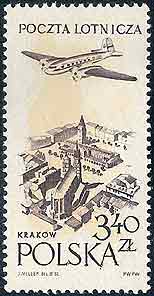

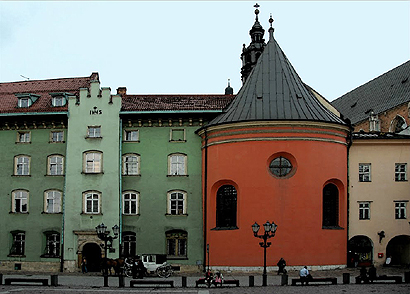
POLAND, 1957, St. Barbara church is at the lower
left above the KR of Krakow, Scott C43
A view from the Small Market Square showing the Jesuit residence (green) and
the rear of the church (red) and its spire, with the roof of Saint Mary to
the right
The 14th-century Church of St. Barbara in Krakow
was transferred to the Jesuits on February 7, 1583. In the stamp above
it stands to the left of the choir of Notre Dame and its well-known towers
(see detail). From 1583 to 1612 they bought three neighboring Gothic burgher
houses rebuilt in 1615 to make a residence for the Jesuits. It was remodeled
in the Baroque style and housed a famous Jesuit college which competed
with the Krakow Jagiellonian University. At the Suppression the Jesuit
property was taken over by the National Education
Commission and passed through several hands until full ownership was
restored to the Jesuits in 1910. Among the superiors of the church and
residence were Piotr Skarga, preacher of King
Sigismund III, and Jakob Wujek, translator of
the Bible into Polish, who is buried with 138 other Jesuits in the crypts
beneath the church.
Saints
Peter and Paul Church,
Krakow
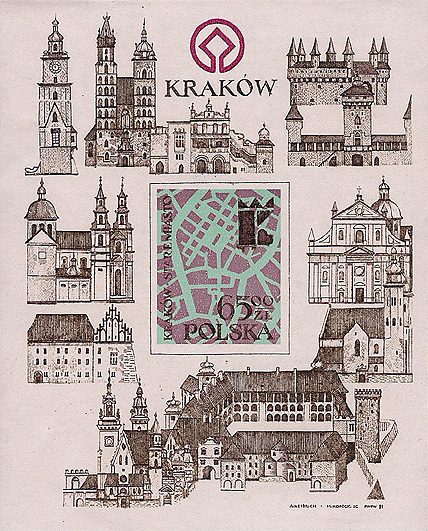
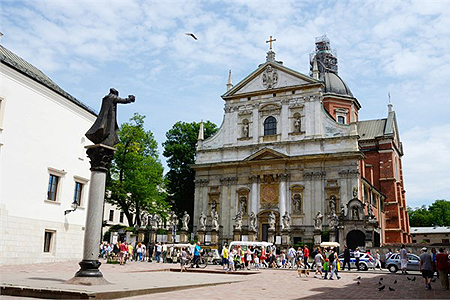
POLAND, 1982, Krakow Monuments Restoration souvenir sheet, Scott 2549
The Jesuit Church of Saints Peter and Paul is illustrated at 3 PM.
In 1597 King Sigismund III Vasa set aside substantial funds to build
a new church for the Jesuits in Krakow, since St. Barbara's
Church had proven too small for their mission. The new church, consecrated
in 1635, was modeled after the Gesu in Rome, the mother church of the
Jesuit Order. It was the first Baroque building in Krakow. Its crypt serves
as the new national pantheon for Poles distinguished in the arts, science
and culture, and chief among them are the remains of Fr. Piotr Skarga,
a statue in whose honor is in the center of the Plaza of St. Mary Magdalene
opposite the facade of the church. The statues of the twelve apostle before
the facade are a striking feature of the church. More
The
Jesuit Church, Lublin
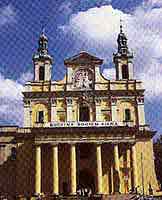
The Jesuit church in Lublin, dedicated to St. John
the Baptist and St. John the Evangelist, was constructed by Bernhard Maciejowski,
later Cardinal Archbishop of Gnesen, between 1582 and 1600, and remained
a Jesuit church until 1722. It was rebuilt in 1757 after a fire and later
became the cathedral. This is where St. John Paul II served 6:00 AM weekday
Mass when he was a professor at the Catholic university.
The
Castle Chapel at Malbork
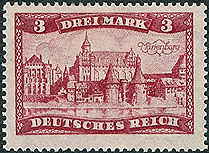
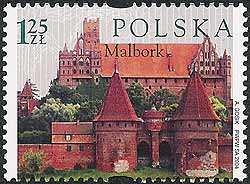
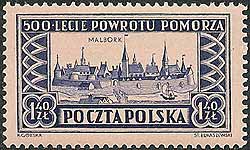
GERMANY, 1924, Scott 339
POLAND, 2004, World Heritage (syncopated perforation), Scott
3755
POLAND, 1954, the 5th centenary of the recovery of Pommerania, Scott
642
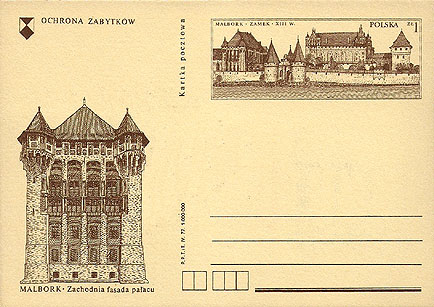
POLAND, 1977, postal card about protection of monuments featuring the
castle, Cp669
This 13th-century fortified castle of the Teutonic
Order and the seat of its grand master is the largest castle in the world
by surface area and the largest brick building in Europe. When the Jesuits
arrived in Marlbork (in German Marienberg) in 1607 they were given charge
of the chapel of St. Mary and its painting of Our Lady in the Gate. In
1756-1767 a Jesuit college was built. In 1656 the Swedes invaded Poland,
captured Malbork and destroyed the chapel. The present terraced walls
in front of the castle were rebuilt during the early 1990's by pupils
of the nearby Technical High School, previously the Jesuit residence.

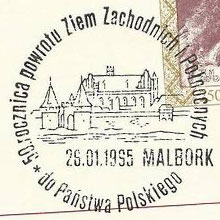
The castle also appears in these two cancels: one of August 30, 1973 reading
"Malbork Castle,"
and one from January 26, 1995 to mark the 50th anniversary of the return
of the Western and Northern Territories to the Motherland
The
Sanctuary of Our Lady, Swieta Lipka
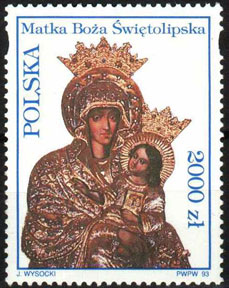
POLAND, 1993, Image of Our Lady of Swieta Lipka, Scott 3173
According to legend, the name Swieta Lipka (Holy
Linden tree) referred to a tree with a wooden statue of Mary under which
miracles took place, though it may stem from a sacred grove of the Old
Prussians. A chapel at the site was first mentioned in a 1491, when Swieta
Lipka was already a pilgrimage site. It was destroyed about 1525 during
the Protestant Reformation, in which the region became Lutheran. The Catholic
faith was again approved in the Duchy of Prussia in 1605, and the site
was turned over to the Jesuits who rebuilt the church which again became
a popular pilgrimage site. The Jesuit monastic complex is considered the
most beautiful Baroque construction in Poland.
The
Benedictine Abbey, Tyniec
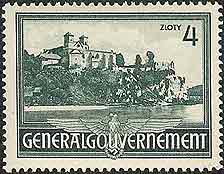
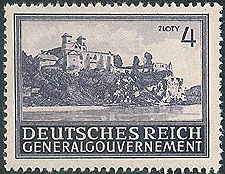
Occupied POLAND,
1941, 1943-44, Scott N75, N101
The Benedictine Abbey at Tyniec was the residence
from 1826 of the Jesuit theology students of the Province of Galicia until
they were driven away by fire in 1831.
The
Church of the Gracious Mother of God, Warsaw
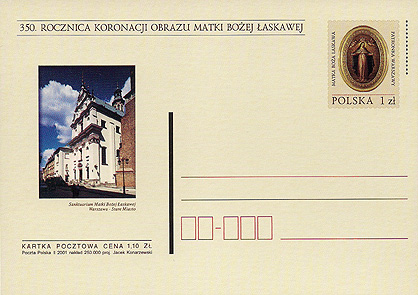
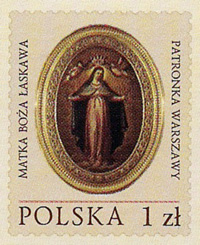
POLAND, 2001, the 350th anniversary of the painting of the Gracious
Mother of God, Patroness of Warsaw (see imprinted stamp)
presented to King John II Casimir Vasa (Jan Kazimierz) by the Pope in 1651
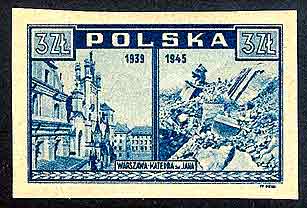

POLAND, 1945, Scott 375
This set also exists with privately created roulette perforations.
POLAND, 1946, Warsaw Liberation overprints, Scott 384
In the center of the left vignette above rises the facade of St. John's
Cathedral in Warsaw, and to its left the Church of the Gracious Mother
of God built from 1609 to 1620. It reverted to the Society in 1917, but
was destroyed during World War II. It has since been rebuilt and is attended
by fathers from the residence of the provincial of the North Polish Province.
NEXT






